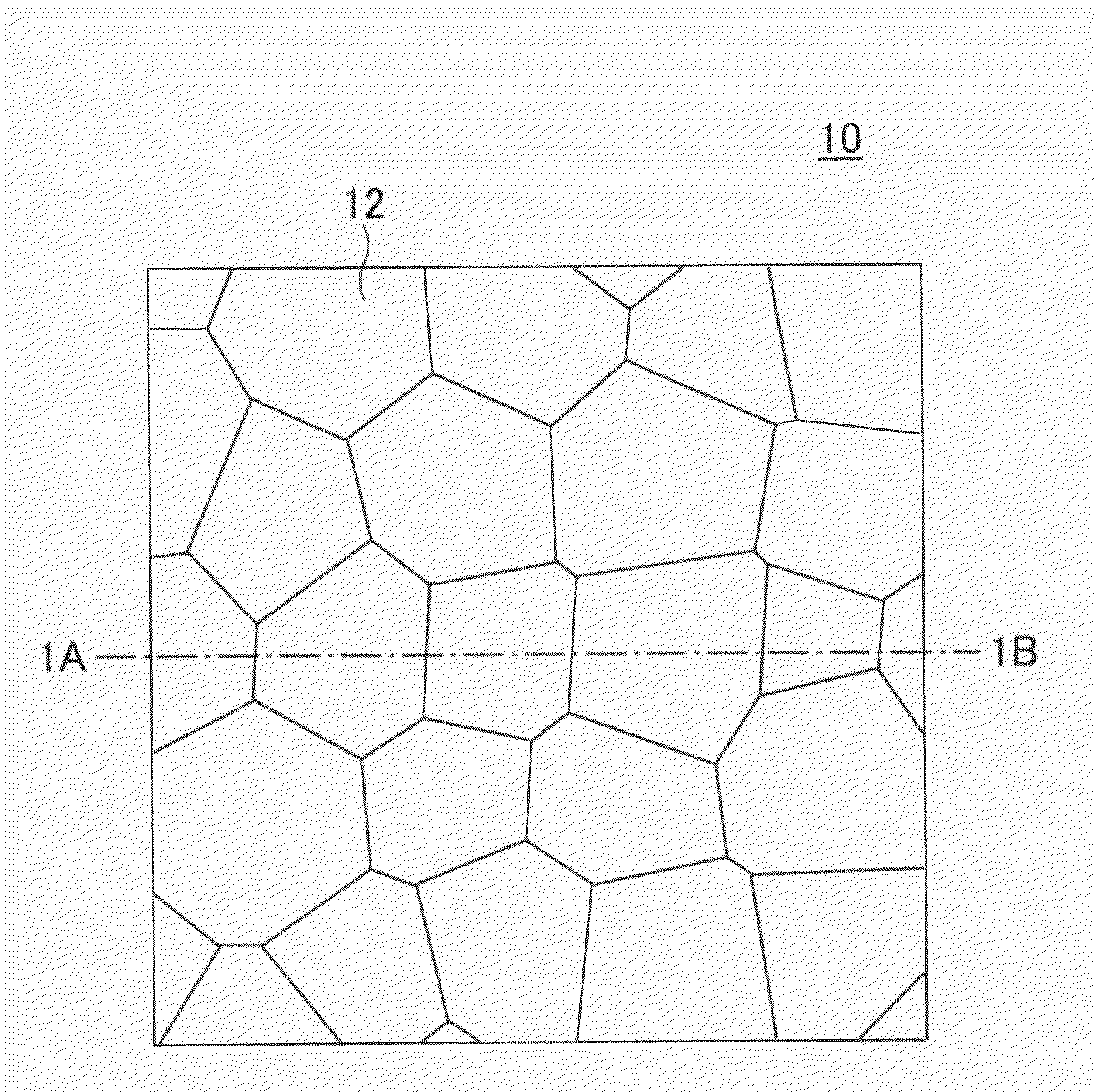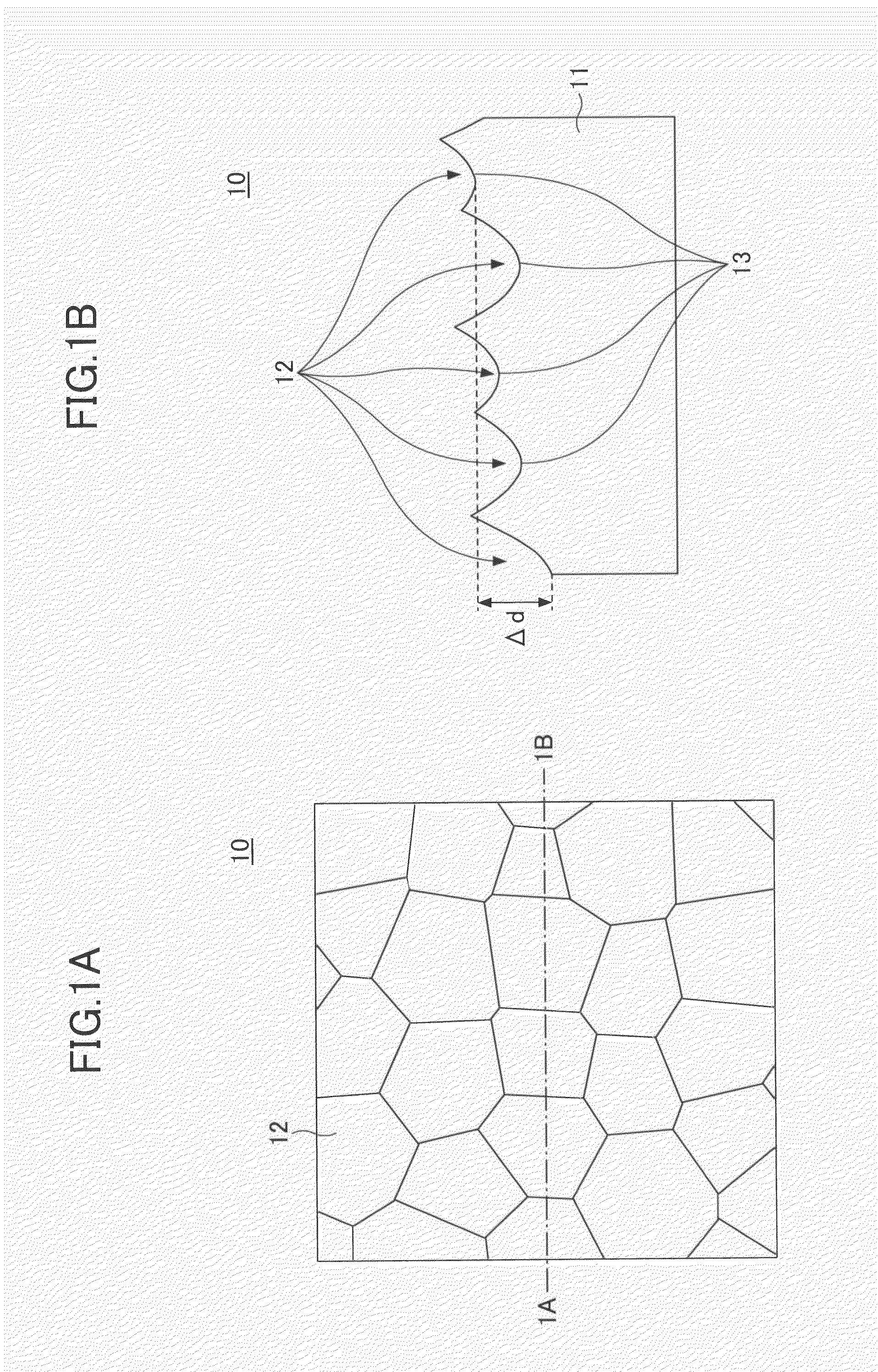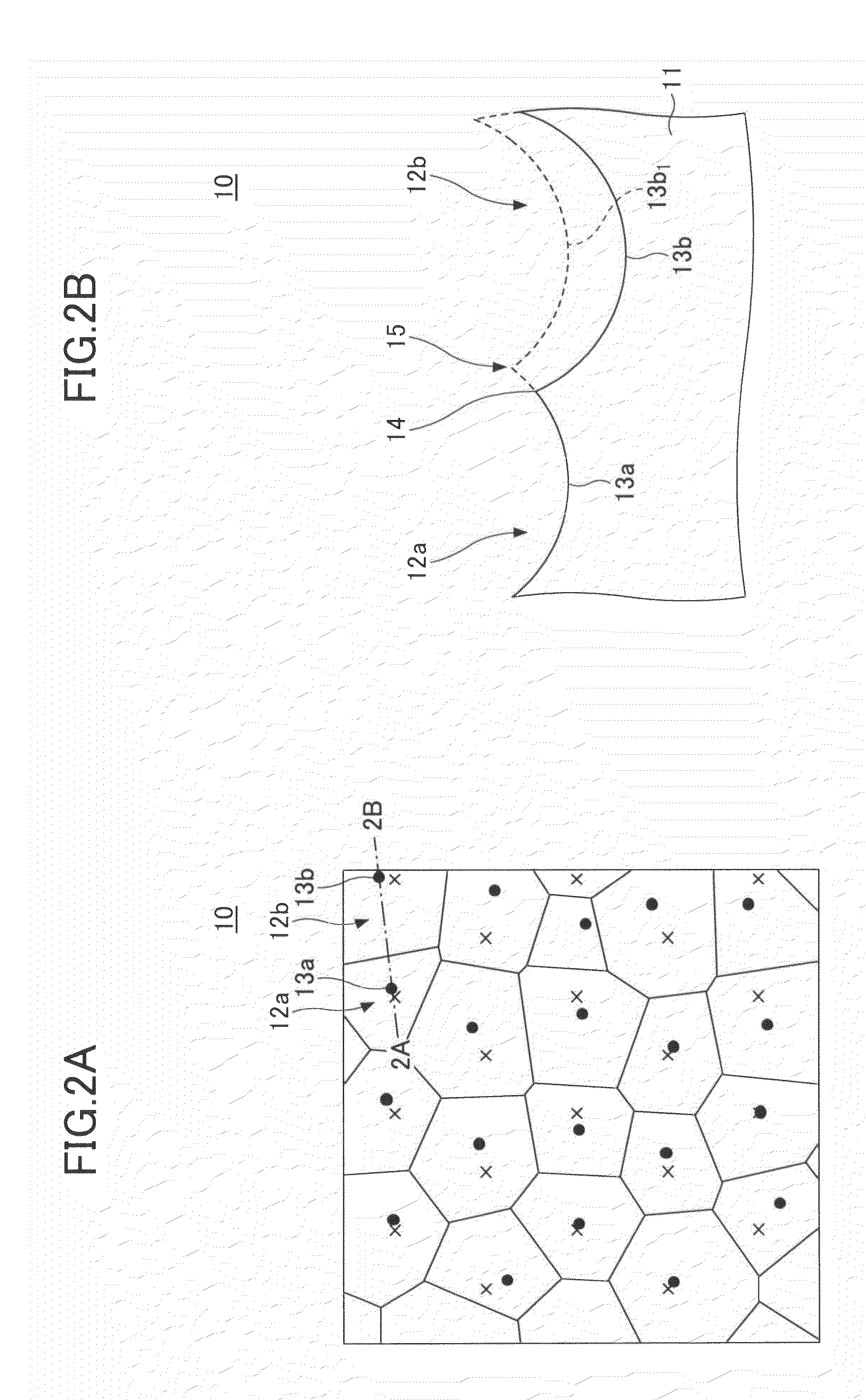Optical device, projector, and method of producing optical device
a technology of optical devices and projectors, applied in the direction of lenses, diffusing elements, instruments, etc., can solve the problems of general inefficiency in using light, insufficient correction of intensity distribution of beam flux,
- Summary
- Abstract
- Description
- Claims
- Application Information
AI Technical Summary
Benefits of technology
Problems solved by technology
Method used
Image
Examples
first embodiment
[0076]The above-described microstructures according to U.S. Pat. No. 7,033,736, which are widely distributed in the depth direction, may generate unnecessary scattered light in the case of light that obliquely enters, such as diverging light.
[0077]Furthermore, resistance to light may be required when laser light is caused to enter. Therefore, optical devices are preferably formed using a light resistant material such as glass as a base material. One method of making a surface of glass or the like uneven is wet etching. In general, however, the shapes that may be formed by wet etching are limited. In the case of forming an uneven surface with deep concaves that differ in depth as illustrated in U.S. Pat. No. 7,033,736, it is difficult to form a desired shape with wet etching.
[0078]Other methods of making a surface of glass or the like uneven include dry etching and press forming. In the case of forming an uneven surface with deep concaves, however, the dry etching has the problem of ...
example 1
[0161]First, a description is given, with reference to FIGS. 13A through 13D, of an optical device according to Example 1.
[0162]The base material 11 formed of glass of a refractive index of 1.53 is cleaned, and a molybdenum film of 50 nm in thickness is deposited on the base material 11 as the mask 21. After deposition of the molybdenum film, a resist is applied, and openings of 1 μm in diameter are formed in the mask 21 by photolithography and etching so as to be arranged as illustrated in FIG. 13A. FIG. 13A illustrates the positions of openings within an area of approximately 1 mm square, where the openings are arranged in a plane at a pitch of 50 μm so that the nearest openings are connected to form equilateral triangles. After formation of the openings, wet etching of 480 μm is performed. Accordingly, the curved surface 24 in the concave 12 has a radius of curvature of 480 μm. FIG. 13B illustrates a planar shape of the optical device after processing. In FIG. 13B, the depth is i...
example 2
[0164]Next, a description is given, with reference to FIGS. 14A through 14D, of an optical device according to Example 2, focusing on differences from that of Example 1.
[0165]Openings of 1 μm in diameter are formed in the mask 21 so as to be arranged as illustrated in FIG. 14A. FIG. 14A illustrates the positions of openings within an area of approximately 1 mm square, where a positional irregularity of the value of 25% of the pitch is introduced into such an arrangement of openings in a plane at a pitch of 50 μm that the nearest openings are connected to form equilateral triangles. After formation of the openings, wet etching of 480 μm is performed. Accordingly, the curved surface 24 in the concave 12 has a radius of curvature of 480 μm. FIG. 14B illustrates a planar shape of the optical device after processing. In FIG. 14B, the depth is illustrated in grayscale, so that the color becomes darker as the depth increases.
[0166]FIG. 14C illustrates a result of calculation of an exiting ...
PUM
 Login to View More
Login to View More Abstract
Description
Claims
Application Information
 Login to View More
Login to View More - R&D
- Intellectual Property
- Life Sciences
- Materials
- Tech Scout
- Unparalleled Data Quality
- Higher Quality Content
- 60% Fewer Hallucinations
Browse by: Latest US Patents, China's latest patents, Technical Efficacy Thesaurus, Application Domain, Technology Topic, Popular Technical Reports.
© 2025 PatSnap. All rights reserved.Legal|Privacy policy|Modern Slavery Act Transparency Statement|Sitemap|About US| Contact US: help@patsnap.com



